Sleepy Hollow may refer to:
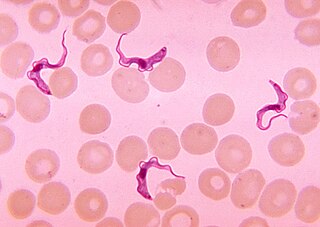
African trypanosomiasis, also known as African sleeping sickness or simply sleeping sickness, is an insect-borne parasitic infection of humans and other animals. It is caused by the species Trypanosoma brucei. Humans are infected by two types, Trypanosoma brucei gambiense (TbG) and Trypanosoma brucei rhodesiense (TbR). TbG causes over 98% of reported cases. Both are usually transmitted by the bite of an infected tsetse fly and are most common in rural areas.

Tsetse, are large, biting flies that inhabit much of tropical Africa. Tsetse flies include all the species in the genus Glossina, which are placed in their own family, Glossinidae. The tsetse is an obligate parasite, which lives by feeding on the blood of vertebrate animals. Tsetse has been extensively studied, because of their role in transmitting disease. They have a prominent economic impact in sub-Saharan Africa, as the biological vectors of trypanosomes, causing human and animal trypanosomiasis. Tsetse is multivoltine and long-lived, typically producing about four broods per year, with up to 31 broods over their lifespans.

Encephalitis lethargica is an atypical form of encephalitis. Also known as "sleeping sickness" or "sleepy sickness", it was first described in 1917 by neurologist Constantin von Economo and pathologist Jean-René Cruchet. The disease attacks the brain, leaving some victims in a statue-like condition, speechless and motionless. Between 1915 and 1926, an epidemic of encephalitis lethargica spread around the world. The exact number of people infected is unknown, but it is estimated that more than one million people contracted the disease during the epidemic, which directly caused more than 500,000 deaths. Most of those who survived never returned to their pre-morbid vigour.

Trypanosomiasis or trypanosomosis is the name of several diseases in vertebrates caused by parasitic protozoan trypanosomes of the genus Trypanosoma. In humans this includes African trypanosomiasis and Chagas disease. A number of other diseases occur in other animals.

Melarsoprol is an arsenic-containing medication used for the treatment of sleeping sickness. It is specifically used for second-stage disease caused by Trypanosoma brucei rhodesiense when the central nervous system is involved. For Trypanosoma brucei gambiense, eflornithine or fexinidazole is usually preferred. It is effective in about 95% of people. It is given by injection into a vein.

Eflornithine, sold under the brand name Vaniqa among others, is a medication used to treat African trypanosomiasis and excessive hair growth on the face in women. Specifically it is used for the 2nd stage of sleeping sickness caused by T. b. gambiense and may be used with nifurtimox. It is taken intravenously or topically. It has also been given orally on at least some rare occasions for the treatment of African trypanosomiasis.

Arsanilic acid, also known as aminophenyl arsenic acid or aminophenyl arsonic acid, is an organoarsenic compound, an amino derivative of phenylarsonic acid whose amine group is in the 4-position. A crystalline powder introduced medically in the late 19th century as Atoxyl, its sodium salt was used by injection in the early 20th century as the first organic arsenical drug, but it was soon found prohibitively toxic for human use.

Trypanosoma brucei is a species of parasitic kinetoplastid belonging to the genus Trypanosoma that is present in sub-Saharan Africa. Unlike other protozoan parasites that normally infect blood and tissue cells, it is exclusively extracellular and inhabits the blood plasma and body fluids. It causes deadly vector-borne diseases: African trypanosomiasis or sleeping sickness in humans, and animal trypanosomiasis or nagana in cattle and horses. It is a species complex grouped into three subspecies: T. b. brucei, T. b. gambiense and T. b. rhodesiense. The first is a parasite of non-human mammals and causes nagana, while the latter two are zoonotic infecting both humans and animals and cause African trpanosomiasis.
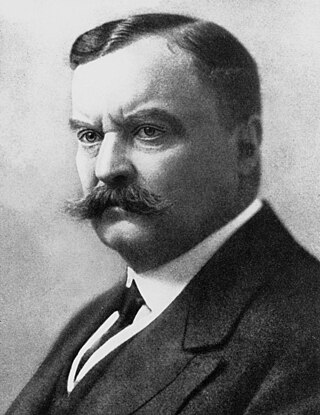
Major-General Sir David Bruce was a Scottish pathologist and microbiologist who made some of the key contributions in tropical medicine. In 1887, he discovered a bacterium, now called Brucella, that caused what was known as Malta fever. In 1894, he discovered a protozoan parasite, named Trypanosoma brucei, as the causative pathogen of nagana.
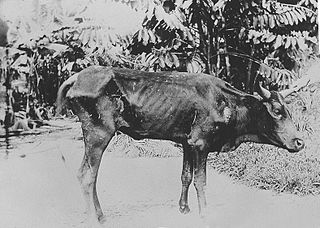
Animal trypanosomiasis, also known as nagana and nagana pest, or sleeping sickness, is a disease of vertebrates. The disease is caused by trypanosomes of several species in the genus Trypanosoma such as Trypanosoma brucei. Trypanosoma vivax causes nagana mainly in West Africa, although it has spread to South America. The trypanosomes infect the blood of the vertebrate host, causing fever, weakness, and lethargy, which lead to weight loss and anemia; in some animals the disease is fatal unless treated. The trypanosomes are transmitted by tsetse flies.
Sleepy means feeling a need for sleep, also known as somnolence. It may also refer to:
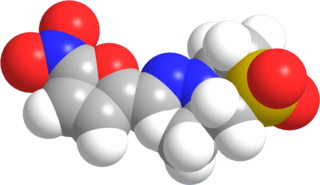
Nifurtimox, sold under the brand name Lampit, is a medication used to treat Chagas disease and sleeping sickness. For sleeping sickness it is used together with eflornithine in nifurtimox-eflornithine combination treatment. In Chagas disease it is a second-line option to benznidazole. It is given by mouth.
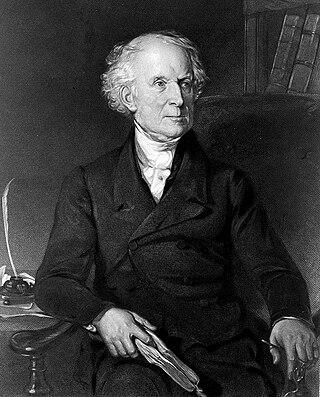
Dr. Thomas Masterman Winterbottom was an English physician, philanthropist and abolitionist remembered for describing African trypanosomiasis and the associated Winterbottom's sign.
Sleep inversion or sleep-wake inversion is a reversal of sleeping tendencies. Individuals experiencing sleep-wake inversion exchange diurnal habits for nocturnal habits, meaning they are active at night and sleep during the day. Sleep-wake inversion, when involuntary, can be a sign of a serious disorder.
Fexinidazole is a medication used to treat African trypanosomiasis caused by Trypanosoma brucei gambiense. It is effective against both first and second stage disease. Some evidence also supports its use in Chagas disease. It is taken by mouth.
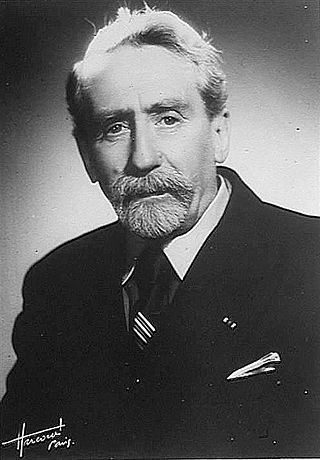
Émile Roubaud was a French biologist and entomologist known for his work on paludism, yellow fever and sleeping sickness.
The sleeping sickness of Kalachi, Kazakhstan is a conjectured medical condition which causes a person to sleep for days or weeks at a time, together with other symptoms such as hallucinations, nausea, intoxicated behavior, disorientation and memory loss. The phenomenon was only reported in Kalachi and the nearby village of Krasnogorsk. It was first reported in March 2013 and by 2016 had affected about 150 people. The syndrome appeared to be non-communicable. The disease disappeared for some time but re-emerged in 2015, and affected all age groups.
Lwala Hospital Kaberamaido is a hospital in Lwala Village, in Kaberamaido District, in the Eastern Region of Uganda. It is a private, community hospital, serving the district of Kaberamaido and surrounding communities.
The Sleeping Sickness Commission was a medical project established by the British Royal Society to investigate the outbreak of African sleeping sickness or African trypanosomiasis in Africa at the turn of the 20th century. The outbreak of the disease started in 1900 in Uganda, which was at the time a protectorate of the British Empire. The initial team in 1902 consisted of Aldo Castellani and George Carmichael Low, both from the London School of Hygiene and Tropical Medicine, and Cuthbert Christy, a medical officer on duty in Bombay, India. From 1903, David Bruce of the Royal Army Medical Corps and David Nunes Nabarro of the University College Hospital took over the leadership. The commission established that species of blood protozoan called Trypanosoma brucei, named after Bruce, was the causative parasite of sleeping sickness.












